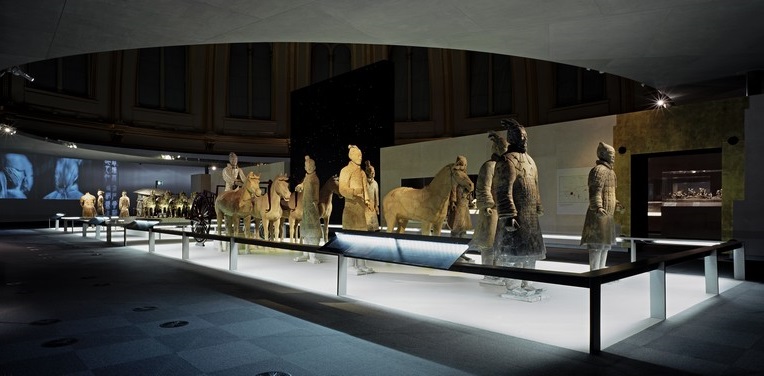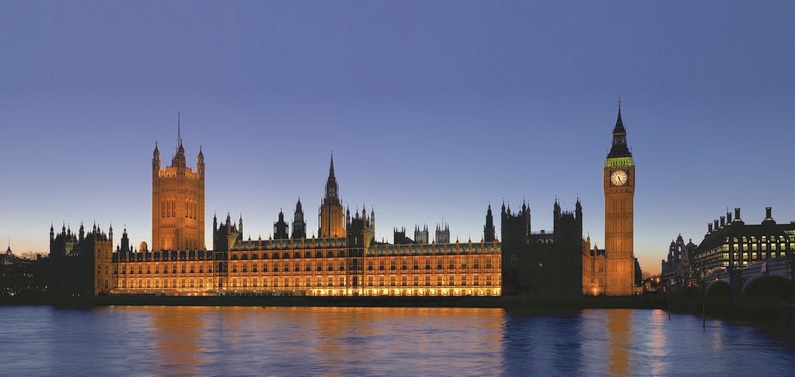Purcell has put the theory of building conservation and restoration into practice on some of the world’s most valuable built heritage.

Not every architectural practice lets its portfolio speak for itself. Purcell does. The company’s forte lies in restoration and refurbishment, with a client list and project portfolio that has a halo of pomp and grandeur.
The firm’s 67-year history includes work on some of the most iconic and esteemed buildings and institutions in Britain, including the Palace of Westminster that accommodates the Houses of Parliament, the British Museum, St Paul’s Cathedral, the National Gallery and the National Maritime Museum.
The company philosophy, expressed on its website, is “Thoughtfully Designed Evolution”. In practice that ethos has seen Purcell apply care and passion to finding customised solutions and upgrades for some of Britain’s best-loved structures.
“Whether restoring a historic property, creating a contemporary addition, or designing a new eco-home, our passionate and creative team design bespoke solutions that provide high quality spaces with strong identity,” says Chris Betts, a Purcell partner and head of the firm’s residential team.
From its beginnings in post-war England, the firm has grown into an international outfit with 18 offices, mostly in Britain and the Asia-Pacific region. Its Asia-Pacific regional headquarters is in Hong Kong. And so, too, is one of its recent high-profile projects – the conservation and regeneration of Central Police Station, a site that has been idle for eight years.

Helena May, Hong Kong
Mending fabric
Working for the Hong Kong Jockey Club, Purcell has sought appropriate adaptive reuses for the 17 buildings in the compound, a designated monument which was decommissioned as a police station in 2006.
The challenge for Purcell and the concept architects Herzog & de Meuron is to strike a balance between the historic character of the buildings that date to 1841 and sustainable renewal requirements. Purcell’s design notes for the project call for a scheme to “create a coherent identity for the site as a whole, and forge new links to make the site an integral part of the city’s fabric and cultural life”.
Those objectives seem outlandish but Purcell has the pedigree backed by testimonials from satisfied clients. Take Daniel Robbins, senior curator at Leighton House Museum in London, who says of his experience: “The quality of the work that was completed at Leighton House has captured the public’s imagination and generated enormous new interest since completion”.
And Perdita Hunt, director of the Watts Gallery in Compton, Surrey, England, is similarly effusive. “Purcell related instantly to the ethos of the Watts Gallery and history. They took all pains to preserve its unique character, while providing immensely helpful practical advice,” she says.
Set in stone

St. Georges Hall, Livepool
The Purcell story began in 1947 when Donovan Purcell founded the firm which became Purcell Miller Tritton after Peter Miller and Bill Tritton came on board.
Donovan Purcell was a fellow of Corpus Christi College Cambridge where he taught at the School of Architecture. He was fascinated with the construction skills of local craftsmen and with the materials they used, particularly stone, brick and terracotta.
In the 1960s, he was appointed by Ely Cathedral in Cambridgeshire to launch a restoration campaign and to work on stabilising the west tower. This paved the way for more than two decades of careful and considered repair.
Donovan Purcell’s commitment to the highest standards of architecture and his enthusiasm for the work became characteristic of the company as the practice grew. Among his published works are Stones of Ely Cathedral, Cambridge Stone and The Building of Ely Cathedral, all reflecting his passion for traditional materials, venerable buildings and craftsmanship.
He was the founder and first chairman of the Standing Joint Committee on Natural Stones in 1974, a forum to increase the awareness of natural stone at all levels and to work for a wider knowledge of its use. Purcell’s legacy is commemorated in the annual Donovan Purcell Lecture which was started in 1969.

Grand designs
Today, the practice maintains the high standards of its founder with a team of approachable, intelligent, dynamic architects, heritage consultants and surveyors responding creatively to challenges in conservation.
Among the contracts on Purcell’s roll of honour is its work on the Palace of Westminster, where it is responsible for a 10-year rolling programme of repairs on all cast-iron roofs. Additionally, the press gallery has been refurbished with the removal of some internal walls and creation of fresh spaces,
Another high-end job was the conservation project on St Paul’s Cathedral, a major series of works that revitalised Sir Christopher Wren’s domed masterpiece with structural repairs, reconstruction of damaged steps, cleaning and relighting. Completed on deadline in time for the building’s tercentenary in 2010, Purcell’s efforts were recognised with multiple industry awards.
The practice’s association with the British Museum extends to 1995. Since 1999, the company has been the museum’s Conservation Architect. It has carried out refurbishments of various galleries but its most notable achievement was the repair and remodelling of the Manuscript Saloon, one of the oldest parts of the neo-classical part of the building that dates back to 1825.
The most difficult part was to transform old original book presses into illuminated display cases. Fibre optic cabling was threaded into the presses to provide unobtrusive but effective lighting. Purcell again liaised with English Heritage and also with officials from the local government to ensure no damage was done to the historic fabric.
In the hospitality sector, Purcell is rightly proud of the transformation it did on the Athenaeum Hotel in London’s Piccadilly. Alterations in the 1970s had left the prominent, wonderfully situated Art Deco hotel, looking dated. Public areas were upgraded, the original architecture recovered, the creation of a remodelled exterior that saw a nine-storey living botanical wall become the building’s façade, and the addition of Juliet balconies and French doors.
With prestige accomplishments to its name and such great standards to live up to, Purcell has become a byword for respectful, knowledgeable, effective renovations, epitomising its promise of “Thoughtfully Designed Evolution”.











